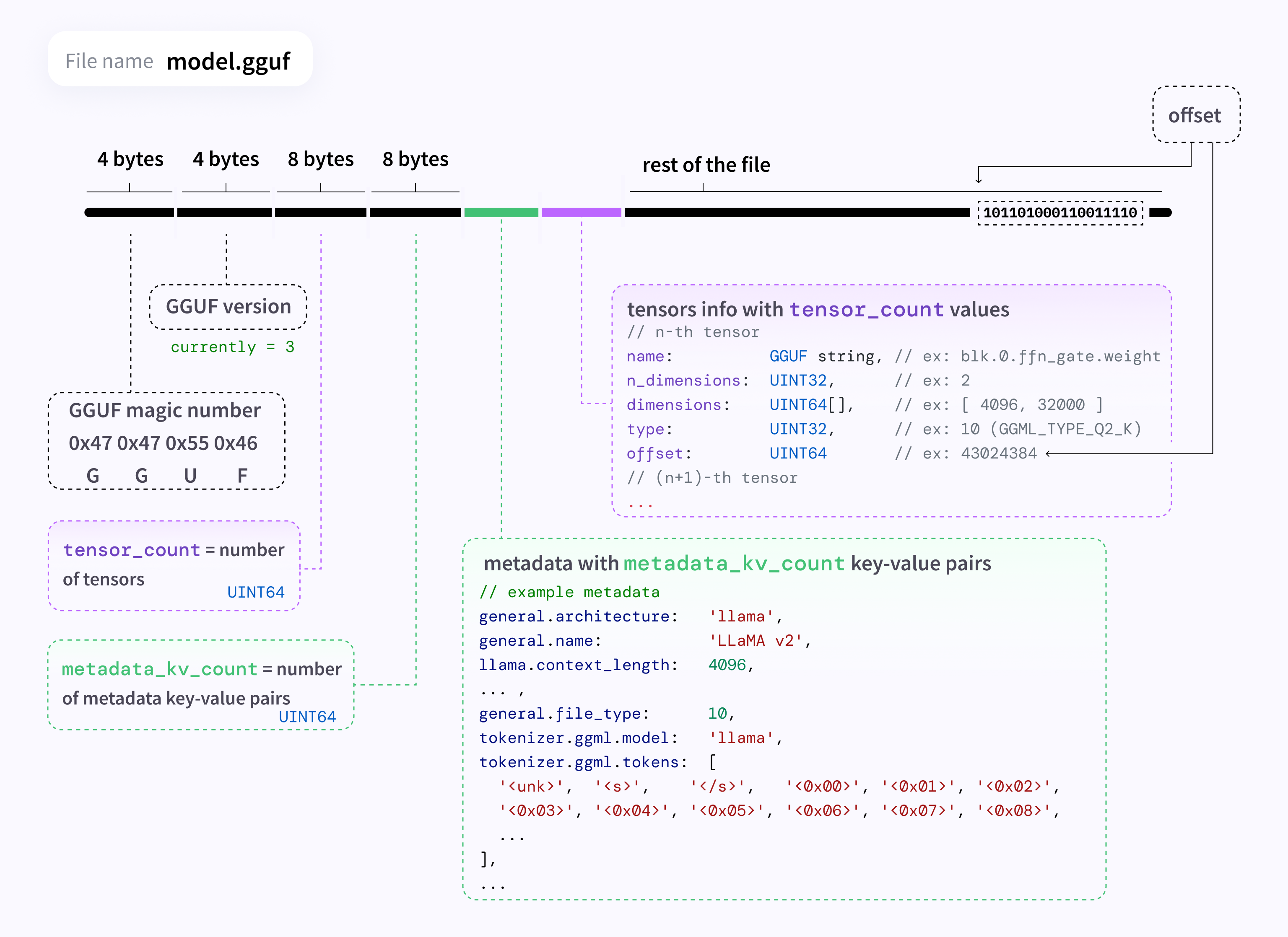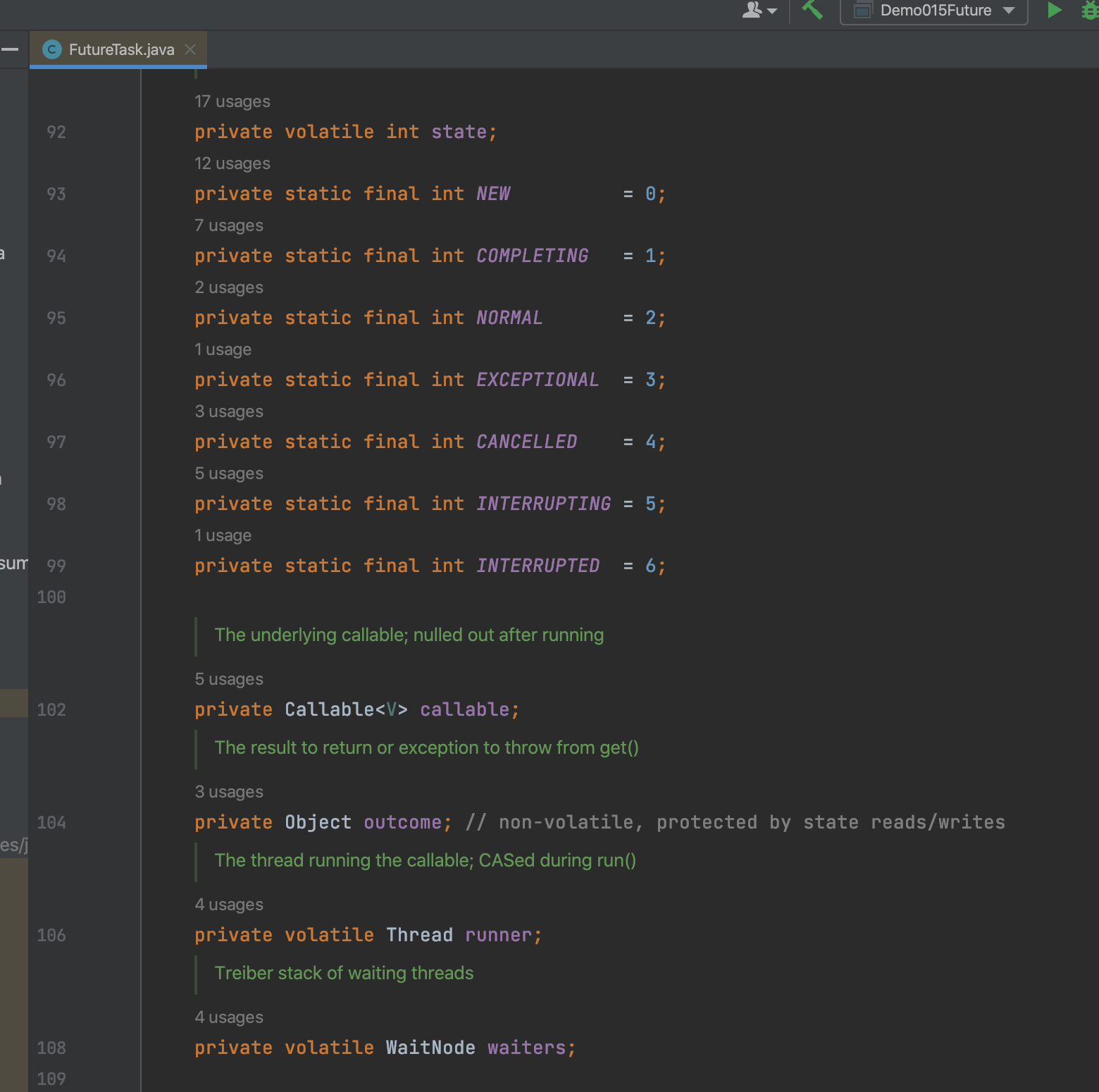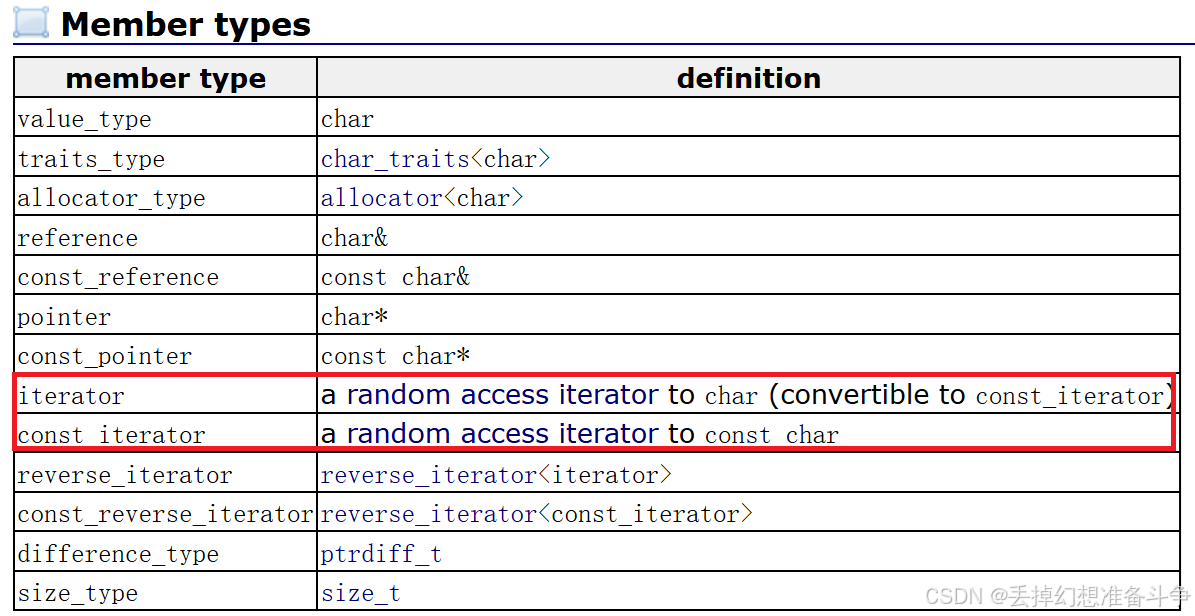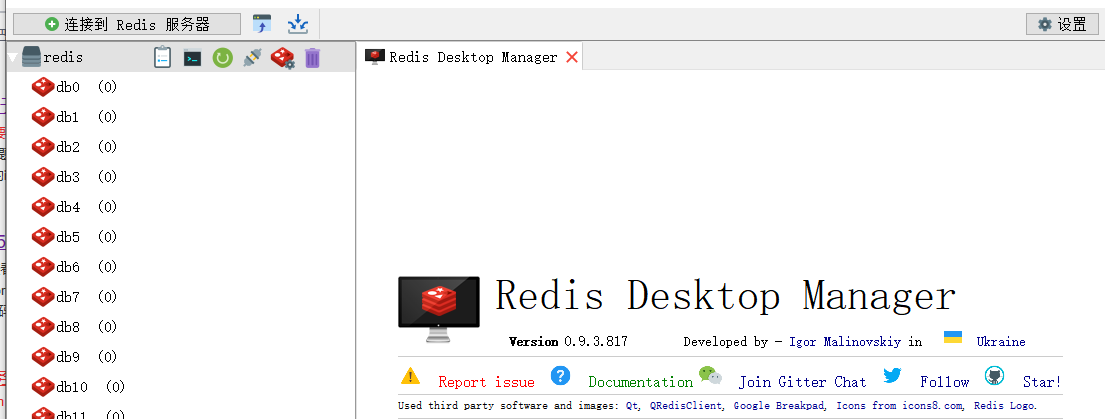简单介绍一下四者的区别。
参考链接:GPTQ - 2210.17323 | AWQ - 2306.00978 | GGML | GGUF - docs | What is GGUF and GGML?
文章目录
- GPTQ vs AWQ vs GGUF(GGML) 速览
- GGUF 文件命名
- GGUF 文件结构
- 文件名解析答案
- 附录
- GGUF 文件命名
- GGUF 文件结构
GPTQ vs AWQ vs GGUF(GGML) 速览
-
GPTQ (Generalized Post-Training Quantization)
GPTQ 是一种基于近似二阶信息的后训练量化技术,能够将模型的权重位宽降低到 3-4 bits,在大幅减少模型大小和计算成本的同时还能保持模型性能。在极端情况下还能量化到 2 bits 甚至 3 进制,但会有一定的性能损失。 -
AWQ (Activation-aware Weight Quantization)

AWQ 不会量化模型的所有权重,保留了对模型性能重要的一小部分权重,大大减少了量化损失。如图所示,这里比较极端,是 INT3 量化:
-
图 a:RTN量化(Round-to-Nearest)
将权重直接四舍五入到目标位宽,导致性能明显下降,PPL 达到 43.2。 -
图 b:保护 1% 的显著权重,使用混合精度形式
这里展示了一种改进策略,即保留 1% 最重要的权重通道使用高精度(FP16),其余使用低精度(INT3)。PPL 降低到 13.0。虽然这种方法能保住性能,但由于需要不同精度切换,硬件效率不高。但这一策略证明了并非所有权重都对模型性能同等重要。 -
图 c:AWQ 提出的通道缩放量化方法
AWQ 通过通道缩放保护显著权重,利用激活分布找到重要的权重并缩放它们的值来减少量化误差。相比混合精度形式,AWQ 提升了硬件效率,同时性能与图 b 一致,PPL 也为到 13.0。
-
-
GGML (GPT-Generated Model Language)
「显存不够内存来凑」,这是一种文件格式,支持在CPU和GPU上进行推理。 -
GGUF (GPT-Generated Unified Format):
GGUF 是 GGML 的升级版,提升了扩展和兼容性。
GGUF 文件命名
参考链接:GGUF - docs
GGUF 格式将加载模型所需的所有信息封装在一个文件中,简化了模型的分发和部署。同时,GGUF 文件命名遵循 <BaseName><SizeLabel><FineTune><Version><Encoding><Type><Shard>.gguf 的规则,方便人们快速识别模型的关键信息。具体说明如下:
- BaseName:模型的基础名称或架构名称,例如
Llama。 - SizeLabel:模型的参数规模标签,表示模型的参数数量及可能的专家数量,格式为
<expertCount>x<count><scale-prefix>。- expertCount:表示专家模型中的专家数量。如果模型没有使用 Mixture of Experts (MoE) 架构,可以省略。
- Count:
Q: 表示百万亿(quadrillion)参数。T: 表示万亿(trillion)参数。B: 表示十亿(billion)参数。M: 表示百万(million)参数。K: 表示千(thousand)参数。
当前主流大模型多为 B 级参数(十亿级),但未来 T(万亿级)模型可能会成为主流。
- 附加属性:在某些情况下,
-<attributes><count><scale-prefix>可以进一步细化模型的描述,添加额外的参数,例如Q,K,T,这些表示量化方式或其他模型特性。例如:Q4: 表示 4-bit 量化。
示例:7B: 表示 70 亿参数的模型。4x3T: 表示有 4 个专家的 3 万亿参数模型。2x10B-Q4: 表示有 2 个专家且采用 Q4 量化的 100 亿参数模型。
- FineTune:微调目标描述(如
Chat、Instruct)。 - Version(可选):模型的版本号,格式为
v<Major>.<Minor>,没提供则假设为v1.0。 - Encoding:权重编码方案(如
Q4_0表示 4-bit 量化)。 - Type:文件类型,如
LoRA(适配器)或vocab(仅包含词汇表)。 - Shard(可选):模型分片信息,格式为
<ShardNum>-of-<ShardTotal>,适用于大型模型。例如00003-of-00009表示第 3 个分片,共 9 个分片,注意分片编号从00001开始,而非00000。
验证命名是否符合规范的正则:
^(?<BaseName>[A-Za-z0-9\s]*(?:(?:-(?:(?:[A-Za-z\s][A-Za-z0-9\s]*)|(?:[0-9\s]*)))*))-(?:(?<SizeLabel>(?:\d+x)?(?:\d+\.)?\d+[A-Za-z](?:-[A-Za-z]+(\d+\.)?\d+[A-Za-z]+)?)(?:-(?<FineTune>[A-Za-z0-9\s-]+))?)?-(?:(?<Version>v\d+(?:\.\d+)*))(?:-(?<Encoding>(?!LoRA|vocab)[\w_]+))?(?:-(?<Type>LoRA|vocab))?(?:-(?<Shard>\d{5}-of-\d{5}))?\.gguf$
尝试理解下面三个来自官方文档的文件命名,看看你能否正确解析:
- Mixtral-8x7B-v0.1-KQ2.gguf
- Hermes-2-Pro-Llama-3-8B-F16.gguf
- Grok-100B-v1.0-Q4_0-00003-of-00009.gguf
在文章的末尾会给出解析答案,现在请停下来思考。
GGUF 文件结构

如果想进一步了解,查看附录部分的代码。
文件名解析答案
-
Mixtral-8x7B-v0.1-KQ2.gguf:
- BaseName:Mixtral
- SizeLabel:
- Expert Count: 8
- Parameter Count: 7B
- Version:v0.1
- Encoding:KQ2
-
Hermes-2-Pro-Llama-3-8B-F16.gguf:
- BaseName:Hermes 2 Pro Llama 3
- SizeLabel:
- Expert Count: 0
- Parameter Count: 8B
- Version:v1.0
- Encoding:F16
-
Grok-100B-v1.0-Q4_0-00003-of-00009.gguf:
- BaseName:Grok
- SizeLabel:
- Expert Count: 0
- Parameter Count: 100B
- Version:v1.0
- Encoding:Q4_0
- Shard:第 3 个分片,共 9 个分片
附录
GGUF 文件命名
Quantization Types
| 类型 | 来源 | 描述 |
|---|---|---|
| F64 | Wikipedia | 64 位标准 IEEE 754 双精度浮点数。 |
| I64 | GH | 64 位定宽整数。 |
| F32 | Wikipedia | 32 位标准 IEEE 754 单精度浮点数。 |
| I32 | GH | 32 位定宽整数。 |
| F16 | Wikipedia | 16 位标准 IEEE 754 半精度浮点数。 |
| BF16 | Wikipedia | 32 位 IEEE 754 单精度浮点数的 16 位简化版本。 |
| I16 | GH | 16 位定宽整数。 |
| Q8_0 | GH | 8 位四舍五入量化(q)。每个块有 32 个权重。权重公式:w = q * block_scale。目前已不广泛使用的过时量化方法。 |
| Q8_1 | GH | 8 位四舍五入量化(q)。每个块有 32 个权重。权重公式:w = q * block_scale + block_minimum。目前已不广泛使用的过时量化方法。 |
| Q8_K | GH | 8 位量化(q)。每个块有 256 个权重。仅用于量化中间结果。此量化类型支持所有 2-6 位点积。权重公式:w = q * block_scale。 |
| I8 | GH | 8 位定宽整数。 |
| Q6_K | GH | 6 位量化(q)。超块包含 16 个块,每个块有 16 个权重。权重公式:w = q * block_scale(8-bit),每个权重占用 6.5625 位。 |
| Q5_0 | GH | 5 位四舍五入量化(q)。每个块有 32 个权重。权重公式:w = q * block_scale。目前已不广泛使用的过时量化方法。 |
| Q5_1 | GH | 5 位四舍五入量化(q)。每个块有 32 个权重。权重公式:w = q * block_scale + block_minimum。目前已不广泛使用的过时量化方法。 |
| Q5_K | GH | 5 位量化(q)。超块包含 8 个块,每个块有 32 个权重。权重公式:w = q * block_scale(6-bit) + block_min(6-bit),每个权重占用 5.5 位。 |
| Q4_0 | GH | 4 位四舍五入量化(q)。每个块有 32 个权重。权重公式:w = q * block_scale。目前已不广泛使用的过时量化方法。 |
| Q4_1 | GH | 4 位四舍五入量化(q)。每个块有 32 个权重。权重公式:w = q * block_scale + block_minimum。目前已不广泛使用的过时量化方法。 |
| Q4_K | GH | 4 位量化(q)。超块包含 8 个块,每个块有 32 个权重。权重公式:w = q * block_scale(6-bit) + block_min(6-bit),每个权重占用 4.5 位。 |
| Q3_K | GH | 3 位量化(q)。超块包含 16 个块,每个块有 16 个权重。权重公式:w = q * block_scale(6-bit),每个权重占用 3.4375 位。 |
| Q2_K | GH | 2 位量化(q)。超块包含 16 个块,每个块有 16 个权重。权重公式:w = q * block_scale(4-bit) + block_min(4-bit),每个权重占用 2.5625 位。 |
| IQ4_NL | GH | 4 位量化(q)。超块包含 256 个权重。权重 w 通过 super_block_scale 和 importance matrix 计算得到。 |
| IQ4_XS | HF | 4 位量化(q)。超块包含 256 个权重。权重 w 通过 super_block_scale 和 importance matrix 计算得到,每个权重占用 4.25 位。 |
| IQ3_S | HF | 3 位量化(q)。超块包含 256 个权重。权重 w 通过 super_block_scale 和 importance matrix 计算得到,每个权重占用 3.44 位。 |
| IQ3_XXS | HF | 3 位量化(q)。超块包含 256 个权重。权重 w 通过 super_block_scale 和 importance matrix 计算得到,每个权重占用 3.06 位。 |
| IQ2_XXS | HF | 2 位量化(q)。超块包含 256 个权重。权重 w 通过 super_block_scale 和 importance matrix 计算得到,每个权重占用 2.06 位。 |
| IQ2_S | HF | 2 位量化(q)。超块包含 256 个权重。权重 w 通过 super_block_scale 和 importance matrix 计算得到,每个权重占用 2.5 位。 |
| IQ2_XS | HF | 2 位量化(q)。超块包含 256 个权重。权重 w 通过 super_block_scale 和 importance matrix 计算得到,每个权重占用 2.31 位。 |
| IQ1_S | HF | 1 位量化(q)。超块包含 256 个权重。权重 w 通过 super_block_scale 和 importance matrix 计算得到,每个权重占用 1.56 位。 |
| IQ1_M | GH | 1 位量化(q)。超块包含 256 个权重。权重 w 通过 super_block_scale 和 importance matrix 计算得到,每个权重占用 1.75 位。 |
GGUF 文件结构
GGUF - docs
enum ggml_type: uint32_t {GGML_TYPE_F32 = 0,GGML_TYPE_F16 = 1,GGML_TYPE_Q4_0 = 2,GGML_TYPE_Q4_1 = 3,// GGML_TYPE_Q4_2 = 4, support has been removed// GGML_TYPE_Q4_3 = 5, support has been removedGGML_TYPE_Q5_0 = 6,GGML_TYPE_Q5_1 = 7,GGML_TYPE_Q8_0 = 8,GGML_TYPE_Q8_1 = 9,GGML_TYPE_Q2_K = 10,GGML_TYPE_Q3_K = 11,GGML_TYPE_Q4_K = 12,GGML_TYPE_Q5_K = 13,GGML_TYPE_Q6_K = 14,GGML_TYPE_Q8_K = 15,GGML_TYPE_IQ2_XXS = 16,GGML_TYPE_IQ2_XS = 17,GGML_TYPE_IQ3_XXS = 18,GGML_TYPE_IQ1_S = 19,GGML_TYPE_IQ4_NL = 20,GGML_TYPE_IQ3_S = 21,GGML_TYPE_IQ2_S = 22,GGML_TYPE_IQ4_XS = 23,GGML_TYPE_I8 = 24,GGML_TYPE_I16 = 25,GGML_TYPE_I32 = 26,GGML_TYPE_I64 = 27,GGML_TYPE_F64 = 28,GGML_TYPE_IQ1_M = 29,GGML_TYPE_COUNT,
};enum gguf_metadata_value_type: uint32_t {// The value is a 8-bit unsigned integer.GGUF_METADATA_VALUE_TYPE_UINT8 = 0,// The value is a 8-bit signed integer.GGUF_METADATA_VALUE_TYPE_INT8 = 1,// The value is a 16-bit unsigned little-endian integer.GGUF_METADATA_VALUE_TYPE_UINT16 = 2,// The value is a 16-bit signed little-endian integer.GGUF_METADATA_VALUE_TYPE_INT16 = 3,// The value is a 32-bit unsigned little-endian integer.GGUF_METADATA_VALUE_TYPE_UINT32 = 4,// The value is a 32-bit signed little-endian integer.GGUF_METADATA_VALUE_TYPE_INT32 = 5,// The value is a 32-bit IEEE754 floating point number.GGUF_METADATA_VALUE_TYPE_FLOAT32 = 6,// The value is a boolean.// 1-byte value where 0 is false and 1 is true.// Anything else is invalid, and should be treated as either the model being invalid or the reader being buggy.GGUF_METADATA_VALUE_TYPE_BOOL = 7,// The value is a UTF-8 non-null-terminated string, with length prepended.GGUF_METADATA_VALUE_TYPE_STRING = 8,// The value is an array of other values, with the length and type prepended.///// Arrays can be nested, and the length of the array is the number of elements in the array, not the number of bytes.GGUF_METADATA_VALUE_TYPE_ARRAY = 9,// The value is a 64-bit unsigned little-endian integer.GGUF_METADATA_VALUE_TYPE_UINT64 = 10,// The value is a 64-bit signed little-endian integer.GGUF_METADATA_VALUE_TYPE_INT64 = 11,// The value is a 64-bit IEEE754 floating point number.GGUF_METADATA_VALUE_TYPE_FLOAT64 = 12,
};// A string in GGUF.
struct gguf_string_t {// The length of the string, in bytes.uint64_t len;// The string as a UTF-8 non-null-terminated string.char string[len];
};union gguf_metadata_value_t {uint8_t uint8;int8_t int8;uint16_t uint16;int16_t int16;uint32_t uint32;int32_t int32;float float32;uint64_t uint64;int64_t int64;double float64;bool bool_;gguf_string_t string;struct {// Any value type is valid, including arrays.gguf_metadata_value_type type;// Number of elements, not bytesuint64_t len;// The array of values.gguf_metadata_value_t array[len];} array;
};struct gguf_metadata_kv_t {// The key of the metadata. It is a standard GGUF string, with the following caveats:// - It must be a valid ASCII string.// - It must be a hierarchical key, where each segment is `lower_snake_case` and separated by a `.`.// - It must be at most 2^16-1/65535 bytes long.// Any keys that do not follow these rules are invalid.gguf_string_t key;// The type of the value.// Must be one of the `gguf_metadata_value_type` values.gguf_metadata_value_type value_type;// The value.gguf_metadata_value_t value;
};struct gguf_header_t {// Magic number to announce that this is a GGUF file.// Must be `GGUF` at the byte level: `0x47` `0x47` `0x55` `0x46`.// Your executor might do little-endian byte order, so it might be// check for 0x46554747 and letting the endianness cancel out.// Consider being *very* explicit about the byte order here.uint32_t magic;// The version of the format implemented.// Must be `3` for version described in this spec, which introduces big-endian support.//// This version should only be increased for structural changes to the format.// Changes that do not affect the structure of the file should instead update the metadata// to signify the change.uint32_t version;// The number of tensors in the file.// This is explicit, instead of being included in the metadata, to ensure it is always present// for loading the tensors.uint64_t tensor_count;// The number of metadata key-value pairs.uint64_t metadata_kv_count;// The metadata key-value pairs.gguf_metadata_kv_t metadata_kv[metadata_kv_count];
};uint64_t align_offset(uint64_t offset) {return offset + (ALIGNMENT - (offset % ALIGNMENT)) % ALIGNMENT;
}struct gguf_tensor_info_t {// The name of the tensor. It is a standard GGUF string, with the caveat that// it must be at most 64 bytes long.gguf_string_t name;// The number of dimensions in the tensor.// Currently at most 4, but this may change in the future.uint32_t n_dimensions;// The dimensions of the tensor.uint64_t dimensions[n_dimensions];// The type of the tensor.ggml_type type;// The offset of the tensor's data in this file in bytes.//// This offset is relative to `tensor_data`, not to the start// of the file, to make it easier for writers to write the file.// Readers should consider exposing this offset relative to the// file to make it easier to read the data.//// Must be a multiple of `ALIGNMENT`. That is, `align_offset(offset) == offset`.uint64_t offset;
};struct gguf_file_t {// The header of the file.gguf_header_t header;// Tensor infos, which can be used to locate the tensor data.gguf_tensor_info_t tensor_infos[header.tensor_count];// Padding to the nearest multiple of `ALIGNMENT`.//// That is, if `sizeof(header) + sizeof(tensor_infos)` is not a multiple of `ALIGNMENT`,// this padding is added to make it so.//// This can be calculated as `align_offset(position) - position`, where `position` is// the position of the end of `tensor_infos` (i.e. `sizeof(header) + sizeof(tensor_infos)`).uint8_t _padding[];// Tensor data.//// This is arbitrary binary data corresponding to the weights of the model. This data should be close// or identical to the data in the original model file, but may be different due to quantization or// other optimizations for inference. Any such deviations should be recorded in the metadata or as// part of the architecture definition.//// Each tensor's data must be stored within this array, and located through its `tensor_infos` entry.// The offset of each tensor's data must be a multiple of `ALIGNMENT`, and the space between tensors// should be padded to `ALIGNMENT` bytes.uint8_t tensor_data[];
};


















